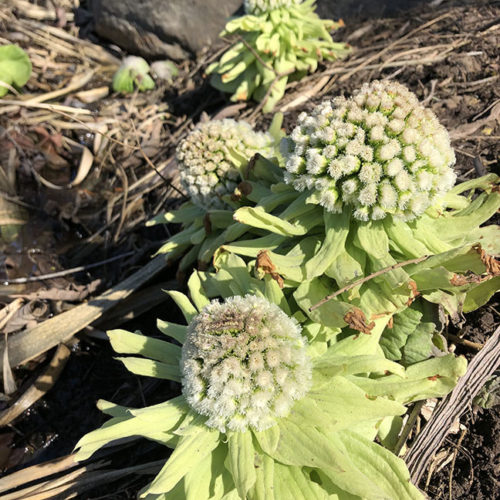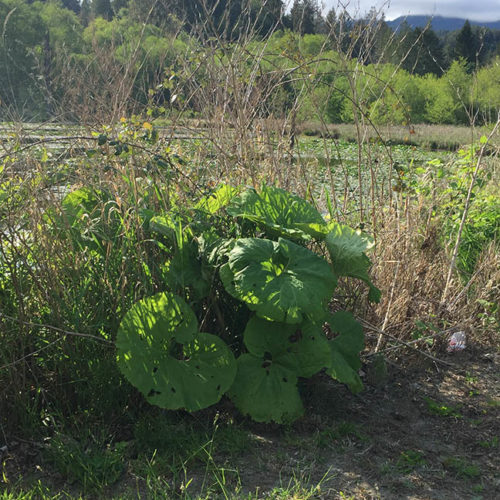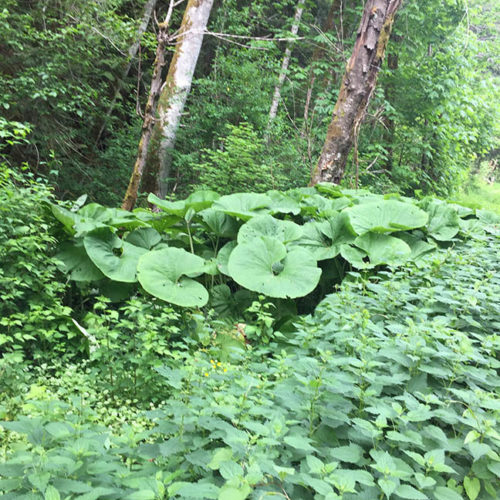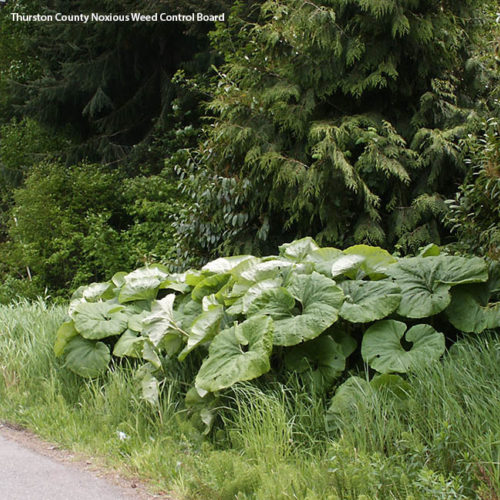Fuki
Petasites japonicus
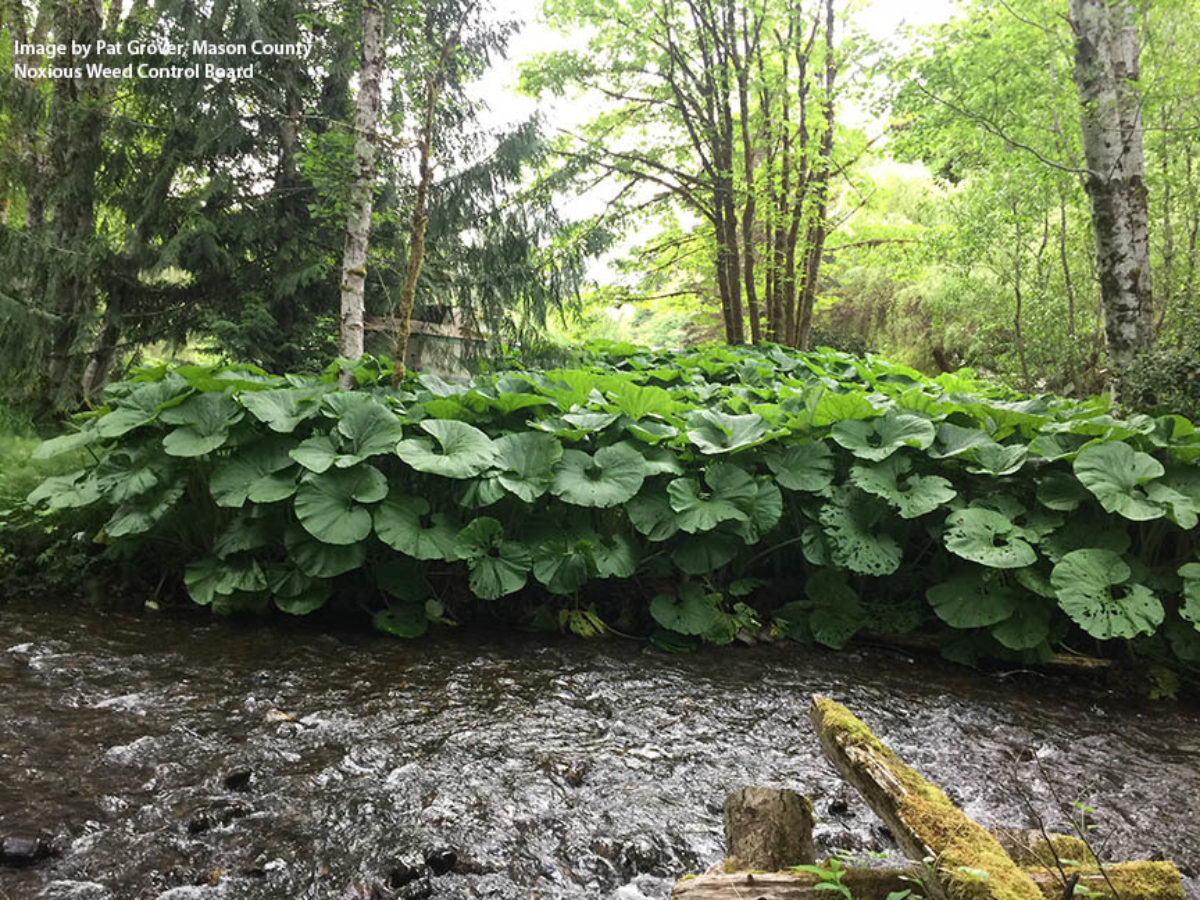
Family: Asteraceae
Other Scientific Names:
Nardosmia japonica
Other Common Names: Japanese coltsfoot, Japanese sweet coltsfoot, giant butterbur, Japanese butterbur
Weed class: monitor list
Native to: Native to parts of temperate Asia - eastern Russian Federation, China, Japan, and South Korea
Is this Weed Toxic?:
humans
Why Is It a Noxious Weed?
This plant is on the monitor list - it is not a listed noxious weed in Washington. Please contact Heidi Steinbach via hsteinbach@masoncountywa.gov to report locations of plants growing outside of ornamental plantings.
How would I identify it?
General Description
A perennial herbaceous plant with creeping rhizomes that sends up flowering stems first, followed by large, rounded basal leaves on long stalks (petioles).
Flower Description
Flower stalks grow from rhizome, up to 1.5 feet tall, with many flowerheads of whitish disk flowers. Plants in the Petasites genus are typically dioecious, with male and female flowers on separate plants.
Leaf description
Basal leaves with long petioles grow directly from the rhizomes. Leaf blades rounded to round-kidney shaped, ranging in width up to 5 feet (1.5 m) wide for the variety giganteus. Blades have toothed margins and are sometimes quite hairy on undersides (white-woolly) or almost hairless, while upper leaf surface is green with some hairs. Flower stems have alternate, leaf-like bracts that are narrow and have parallel veins.
Stem description
The relatively thick and succulent stems are sparsely covered in bristly hairs.
Fruit Seed Description
Achenes (a small, dry one-seeded fruit), about 3.5 mm long, hairless, with 5 to 10 ribs on surface, with a tuft of bristles about 12 mm long on its end.
Where does it grow?
Roadsides, ditches, along creeks and streams, woodlands, wet areas - on moist ground.
How Does it Reproduce?
Rhyzome, seed
How Do I Control It?
Hand pulling small infestations will work, but will have to be done over multiple years to get any newly growing sprouts. Mowing will only hinder its spread, and it can escape container planters. Many common herbicide treatments do not seem to be effective.
For More Information
E-Flora BC: Electronic Atlas of the Flora of British Columbia
UW Herbarium Image Database Information
Information from WeedWise Clackamas SWCD



